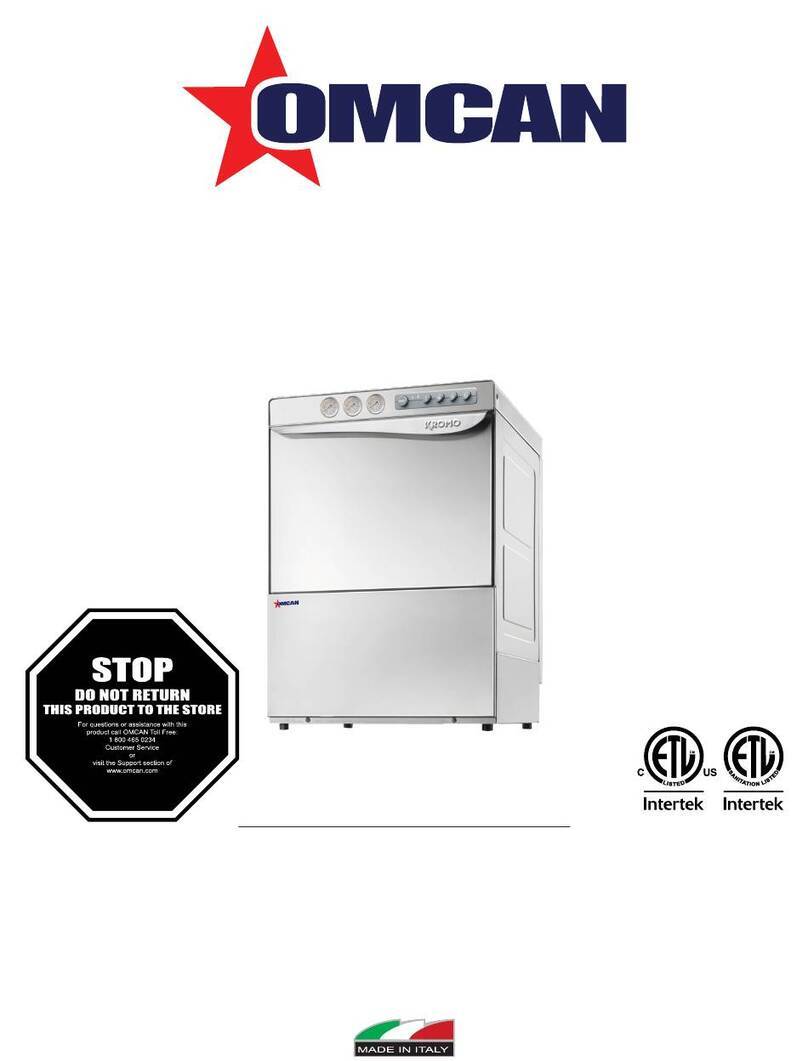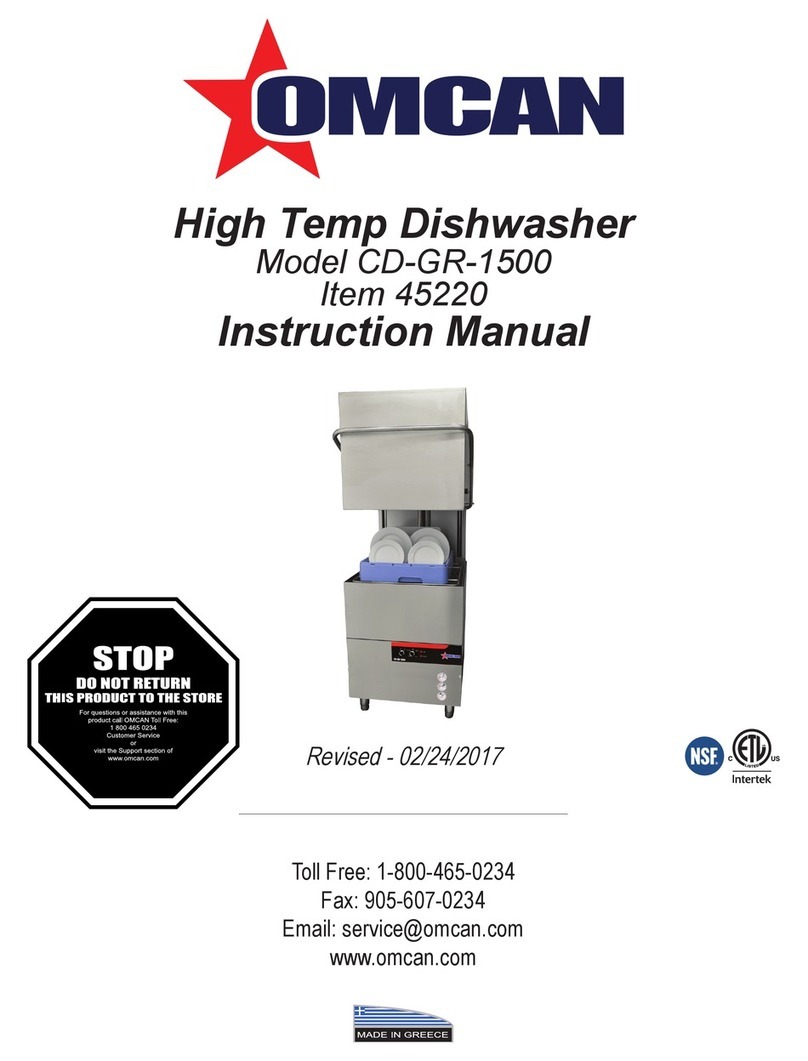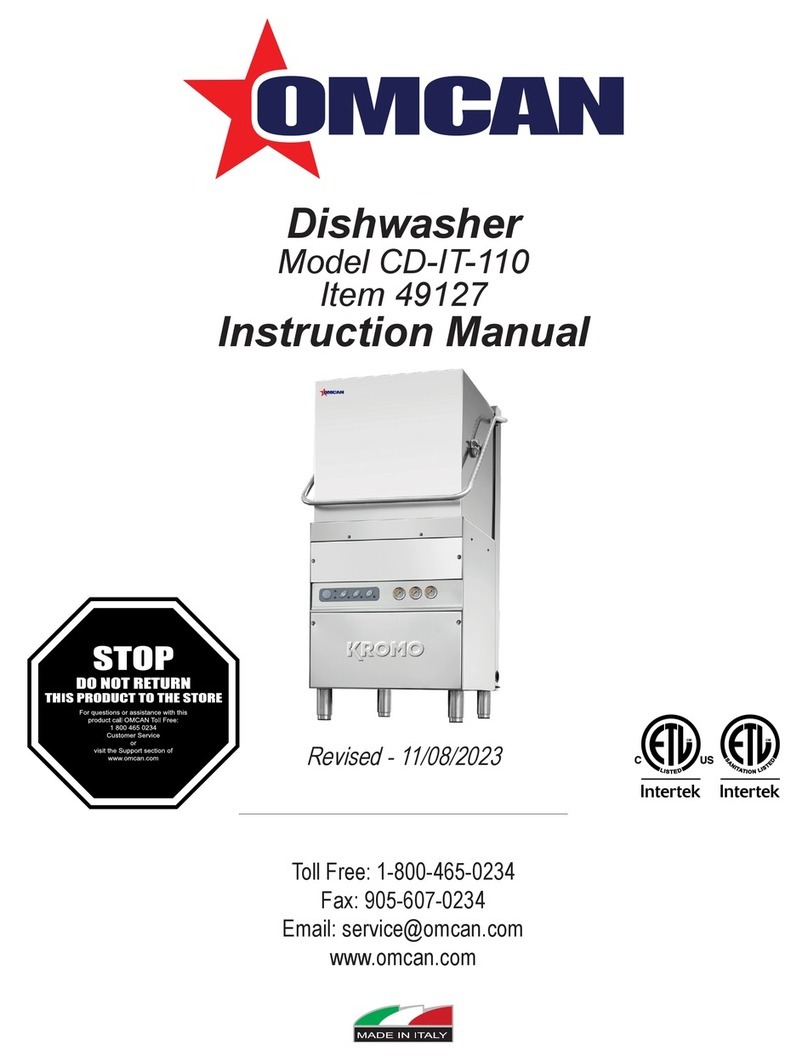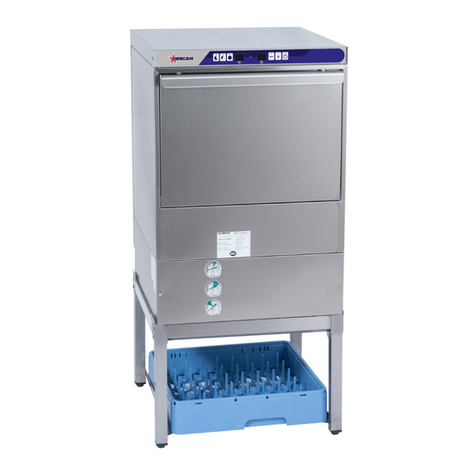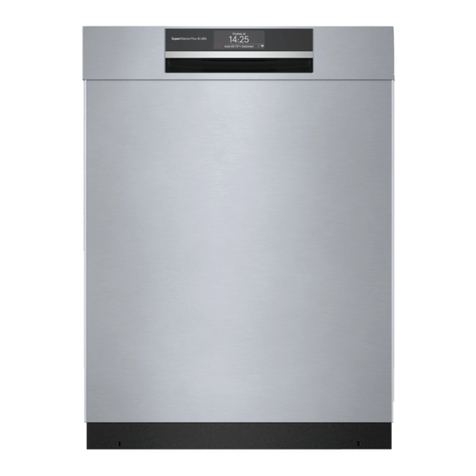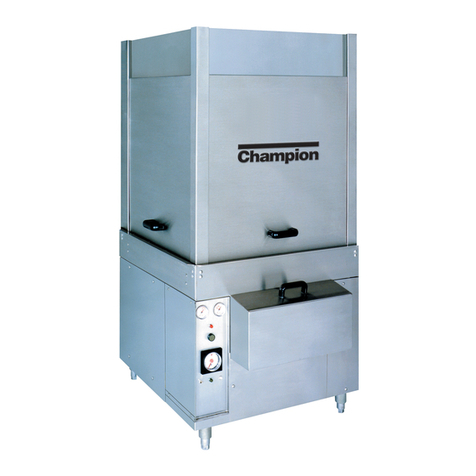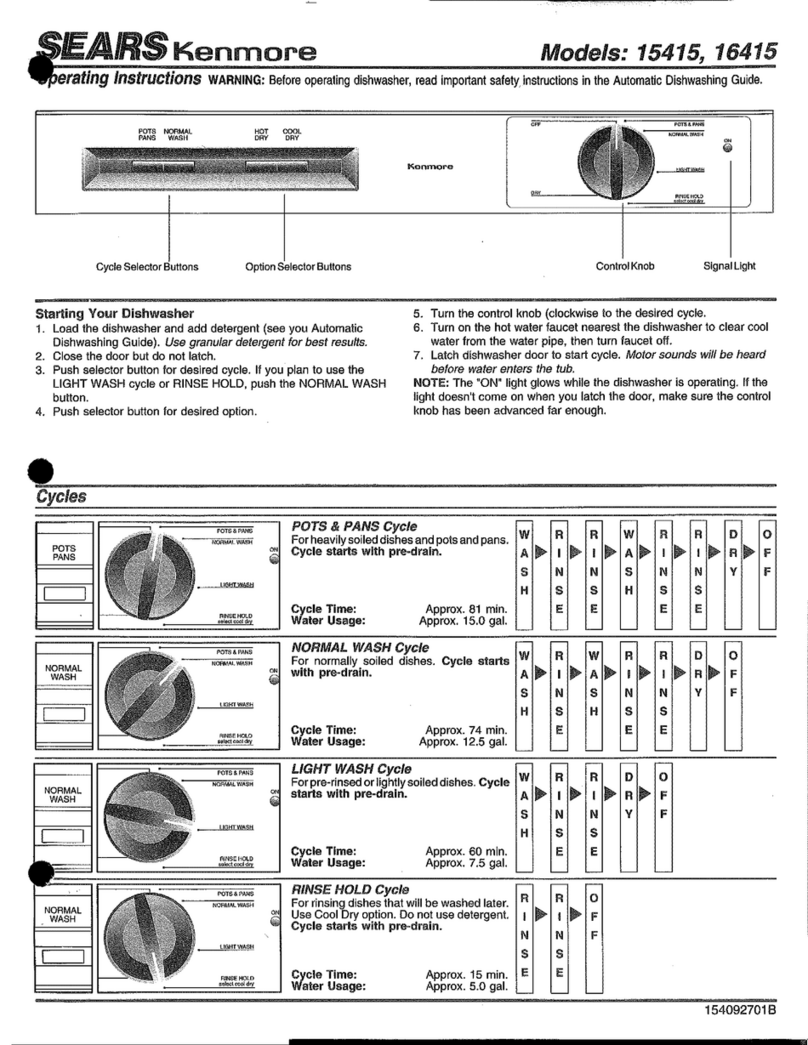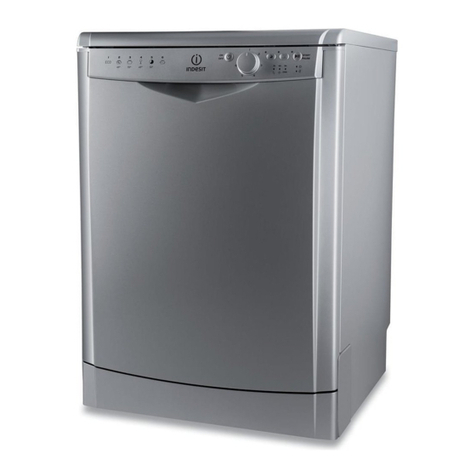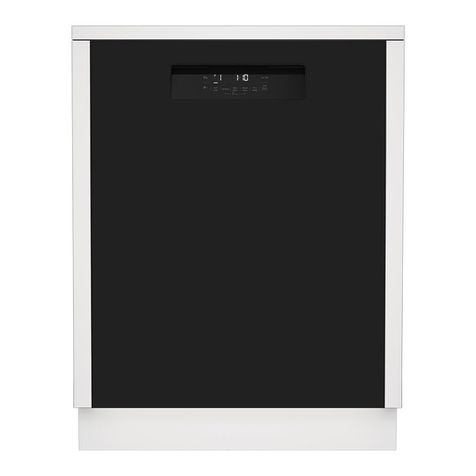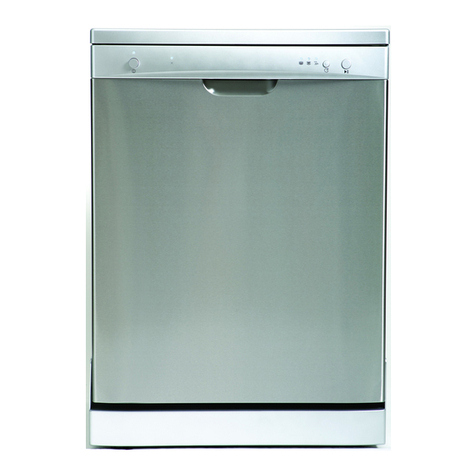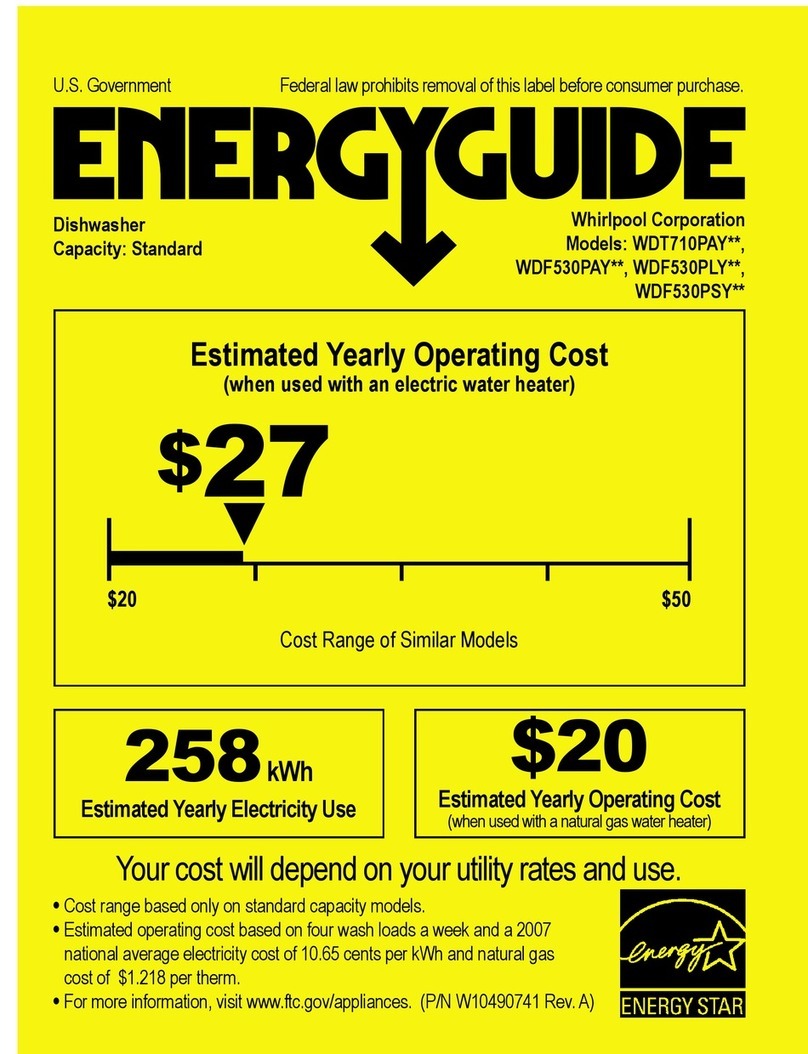Omcan CD-IT-50-2 User manual

Revised - 11/08/2023
Toll Free: 1-800-465-0234
Fax: 905-607-0234
Email: [email protected]
www.omcan.com
Dishwasher
Model CD-IT-50-2
Item 49126
Instruction Manual

2
Page
--------------------------------------------------------------------------- 3 - 4
--------------------------------------------------------------------------- 4 - 6
-------------------------------------------------------------------------- 7
------------------------------------------------------------------ 8 - 14
--------------------------------------------------------------------------------- 14 - 16
----------------------------------------------------------------------------- 16 - 17
----------------------------------------------------------------------------------- 18
---------------------------------------------------------------------------- 19 - 37
---------------------------------------------------------------------------- 38
---------------------------------------------------------------------------- 39
Table of Contents
Section
General Information
Safety and Warranty
Technical Specications
Installation and Operation
Maintenance
Troubleshooting
Figure Drawings
Parts Breakdown
Electrical Schematics
Warranty Registration
Model CD-IT-50-2

3
General Information
Omcan Manufacturing and Distributing Company Inc., Food Machinery of America, Inc. dba Omcan
and Omcan Inc. are not responsible for any harm or injury caused due to any person’s improper or
negligent use of this equipment. The product shall only be operated by someone over the age of 18, of
sound mind, and not under the inuence of any drugs or alcohol, who has been trained in the correct
operation of this machine, and is wearing authorized, proper safety clothing. Any modication to the
machine voids any warranty, and may cause harm to individuals using the machine or in the vicinity of
the machine while in operation.
CHECK PACKAGE UPON ARRIVAL
Upon receipt of an Omcan shipment please inspect for external damage. If no damage is evident on the
external packaging, open carton to ensure all ordered items are within the box, and there is no concealed
damage to the machine. If the package has suered rough handling, bumps or damage (visible or concealed),
please note it on the bill of lading before accepting the delivery and contact Omcan within 24 hours, so we may
initiate a claim with the carrier. A detailed report on the extent of the damage caused to the machine must be
lled out within three days, from the delivery date shown in the shipping documents. Omcan has no recourse
for damaged products that were shipped collect or third party.
Before operating any equipment, always read and familiarize yourself with all operation and safety
instructions.
Omcan would like to thank you for purchasing this machine. It’s of the utmost importance to save
these instructions for future reference. Also save the original box and packaging for shipping the
equipment if servicing or returning of the machine is required.
---------------------------------------------------------------------------------------------------------------------------------------------------
Omcan Fabrication et distribution Companie Limité et Food Machinery d’Amerique, dba Omcan et
Omcan Inc. ne sont pas responsables de tout dommage ou blessure causé du fait que toute personne
ait utilisé cet équipement de façon irrégulière. Le produit ne doit être exploité que par quelqu’un de
plus de 18 ans, saine d’esprit, et pas sous l’inuence d’une drogue ou d’acohol, qui a été formé pour
utiliser cette machine correctement, et est vêtu de vêtements de sécurité approprié. Toute modication
de la machine annule toute garantie, et peut causer un préjudice à des personnes utilisant la machine
ou des personnes à proximité de la machine pendant son fonctionnement.
VÉRIFIEZ LE COLIS DÈS RÉCEPTION
Dès réception d’une expédition d’Omcan veuillez inspecter pour dommages externes. Si aucun dommage
n’est visible sur l’emballage externe, ouvrez le carton an de s’assurer que tous les éléments commandés
sont dans la boîte, et il n’y a aucun dommage dissimulé à la machine. Si le colis n’a subi aucune mauvaises
manipulations, de bosses ou de dommages (visible ou cachée), notez-le sur le bond de livraison avant
d’accepter la livraison et contactez Omcan dans les 24 heures qui suivent, pour que nous puissions engager
une réclamation auprès du transporteur. Un rapport détaillé sur l’étendue des dommages causés à la machine
doit être rempli dans un délai de trois jours, à compter de la date de livraison indiquée dans les documents
d’expédition. Omcan n’a aucun droit de recours pour les produits endommagés qui ont été expédiées ou cueilli
par un tiers transporteur.

4
General Information
Safety and Warranty
Avant d’utiliser n’importe quel équipement, toujours lire et vous familiariser avec toutes les opérations
et les consignes de sécurité.
Omcan voudrais vous remercier d’avoir choisi cette machine. Il est primordial de conserver ces
instructions pour une référence ultérieure. Également conservez la boîte originale et l’emballage pour
l’expédition de l’équipement si l’entretien ou le retour de la machine est nécessaire.
---------------------------------------------------------------------------------------------------------------------------------------------------
Omcan Empresa De Fabricacion Y Distribucion Inc. Y Maquinaria De Alimentos De America, Inc. dba
Omcan y Omcan Inc. no son responsables de ningun daño o perjuicío causado por cualquier persona
inadecuada o el uso descuidado de este equipo. El producto solo podra ser operado por una persona
mayor de 18 años, en su sano juicio y no bajo alguna inuencia de droga o alcohol, y que este ha sido
entrenado en el correcto funcionamiento de esta máquina, y ésta usando ropa apropiada y autorizada.
Cualquier modicación a la máquina anúla la garantía y puede causar daños a las personas usando la
máquina mientras esta en el funcionamiento.
REVISE EL PAQUETE A SU LLEGADA
Tras la recepcion de un envio Omcan favor inspeccionar daños externos. Si no hay daños evidentes en el
empaque exterior, Habra el carton para asegurararse que todos los articulos solicitados ésten dentro de la
caja y no encuentre daños ocultos en la máquina. Si el paquete ha sufrido un manejo de poco cuidado, golpes
o daños (visible o oculto) por favor anote en la factura antes de aceptar la entrega y contacte Omcan dentro
de las 24 horas, de modo que podamos iniciar una reclamación con la compañia. Un informe detallado sobre
los daños causados a la máquina debe ser llenado en el plazo de tres días, desde la fecha de entrega que se
muestra en los documentos de envío. Omcan no tiene ningun recurso por productos dañados que se enviaron
a recoger por terceros.
Antes de utilizar cualquier equipo, siempre lea y familiarizarse con todas las instrucciones de
funcionamiento y seguridad.
Omcan le gustaría darle las gracias por la compra de esta máquina. Es de la mayor importancia para
salvar estas instrucciones para futuras consultas. Además, guarda la caja original y el embalaje para el
envío del equipo si servicio técnico o devolución de la máquina que se requiere.
READ THE INSTRUCTIONS CAREFULLY BEFORE INSTALLING THE MACHINE.
WARNING: FAILURE TO COMPLY (EVEN PARTIALLY) WITH THE RULES GIVEN IN THIS MANUAL
WILL INVALIDATE THE PRODUCT WARRANTY AND RELIEVES THE MANUFACTURER OF ANY
RESPONSIBILITY.

5
Safety and Warranty
WARNINGS
This instructions booklet must be kept with the machine for future consultations. If the machine is sold or
transferred to other users, make sure the booklet always goes with the unit so that the new owner can have
all the necessary information on operations and all relevant instructions. The dishwasher shall be installed
in accordance with local codes, or in the absence of local codes, installed in accordance with the applicable
requirements in the National Electrical Code, NFPA 70, Canadian Electrical Code (CEC), Part 1, CSA C22.1,
and Standard for Ventilation Control and Fire Protection of Commercial Cooking Operations, NFPA 96. These
warnings are provided to safeguard the user in conformity with technical standards UL 921 and NSF3.
The instructions booklet must be carefully read before installation and before starting the machine. The user
must comply with the following rules:
• Adaptation of the electrical and water system for dishwasher installation must be carried out by qualied
operators only.
• The user shall not carry out any repair and/or maintenance operations.
• When the main switch is OFF, only qualied personnel can access the control panel.
• Servicing of this machine must be performed by authorized personnel only.
Note: use genuine spare parts only. Non-genuine parts will void the warranty and the manufacturer
will take no responsibility for any damage.
• Do not use old hose, but only new ones.
• This appliance can be used by trained youth aged from 15 years and above. It cannot be used by persons
with reduced physical, sensory or mental capabilities or lack of experience and knowledge.
• Children shall keep o the appliance.
• Cleaning and user maintenance shall not be made by children without supervision.
• This machine is designed exclusively for washing plates, glasses, trays, baskets and various pots and
pans with human food type of residue. DO NOT wash articles dierent from those stated above and fragile
objects or materials not resistant to washing process.
• It is mandatory to install on the machine feeding line, exclusively dedicated for this unit:
- A fuse protection system with the characteristics shown on the data-plate (or an equivalent system).
- A suitable omni-polar switch, sized according to the absorption shown on the data plate, in order
to disconnect the power network completely. Only such a switch grants a full warranty of a complete
separation from the electric network and it has to be used, always and strictly, before any intervention on
the electrical panel, and by qualied personnel only. This switch shall be installed in the immediate vicinity
of the machine. Only this switch must be used, always and strictly, to de-energize the machine at the end of
the work session.
• Make sure the appliance is linked to an ecient ground connection.
• Do not open the machine doors when operating. After switching the machine o, wait for at least 15
seconds after the motors stop.
WARNINGS: IT IS FORBIDDEN TO INSERT HANDS AND/OR TOUCH INTERNAL PART WHEN THE
MACHINE IS OPERATING AND/OR AT THE END OF THE WASH CYCLE.
• Before using the machine, the personnel shall know the position of the omni-polar switch that disconnected
the machine from the electrical network, the position of the water connection shut-o valve and the
procedures to switch o and secure the machine.

6
Safety and Warranty
• Follow the instructions given in the manufacturer’s booklet for cleaning operations.
• This machine must be disconnected from the main electrical supply after use at the end of the day and for
any service/maintenance operation following this procedure:
- Switch the machine o from the control panel.
- Drain the tank by removing the overow pipe.
- Disconnect the electrical supply by the omni-polar switch (main switch located on the wall).
- Shut the water supply valve(s).
Disregarding the aforesaid prescriptions is a serious misuse and can cause damages and injures to
property and people, and will relieve the manufacturer from whatever liability.
• Do not use water to extinguish res on electrical parts.
• Do not cover the intake or dissipation grids.
• Water inlet to the machine 60PSI (400kPa) maximum.
NOTICE: this machine must be operated with an automatic detergent dosing pump including a visual
means to verify that detergents are delivered, or a visual or audible alarm to signal if detergents are
not available for delivery to the washing system. Please see instructions for electrical and plumbing
connections located in this manual and in the feeder equipment manual.
Note: the manufacturer declines any responsibility for accidents to people or any damage deriving
from failure to observe the above listed instructions.
RESIDENTIAL USERS: vendor assumes no liability for parts or labor coverage for component failure
or other damages resulting from installation in non-commercial or residential applications. The right
is reserved to deny shipment for residential usage; if this occurs, you will be notied as soon as
possible.
1 YEAR PARTS AND LABOUR WARRANTY
Within the warranty period, contact Omcan Inc. at 1-800-465-0234 to schedule an Omcan authorized
service technician to repair the equipment locally.
Unauthorized maintenance will void the warranty. Warranty covers electrical and part failures, not
improper use.
Please see https://omcan.com/disclaimer for complete info.
WARNING:
The packaging components are classied as normal solid urban waste and can therefore be disposed of
without diculty.
In any case, for suitable recycling, we suggest disposing of the products separately (dierentiated
waste) according to the current norms.
DO NOT DISCARD ANY PACKAGING MATERIALS IN THE ENVIRONMENT!

7
Technical Specications
Model CD-IT-50-2
Crockery Dimensions Plates: 12.8” / 325mm dia. Dishes Max Height: 12.2” / 310mm
Rack Dimensions 20” x 20” / 508 x 508mm
Rack Equipment
1 - Plastic Plates Basket
1 - Large Mesh Glass Basket
1 - Cutlery Basket
Inlet Water Pressure (170 - 620
kPa) 25 - 90 PSI
Washing Cycles (sec) 1 (120) | 2 (180)
Water Supply 131°F Racks/H
(*)(1)30 | 20
Water Supply 50°F Racks/H (*)
(1)21 | 20
Water Consumption / Cycle
(rinse pressure 15 PSI) 0.74 gal
Booster Capacity 1.5 gal
Booster Heating Element 6.53 kW
Rinsing Temperature (Set) 85°C / 185°F
Tank Capacity 7.13 gal
Tank Heating Element 2.94 kW
Tank Temperature (Set) 71.1°C / 160°F
Electrical 220 - 240V / 60Hz / 1
Power Required 7.09 kW
Pump Power 0.56 kW (89,8 gal/min***)
Drain Pump 43W hMAX 31.5” / 800mm (10.78 gal/min***)
Noise 59.3 dB(A)
Dimensions 23.4” x 24” x 33.3” / 595 x 610 x 846mm
Weight 134.5 lbs. / 61 kgs.
Item Number 49126
(*) STANDARD THERMOSTOP
(***) MAXIMUM FLOW RATE
(1) In case of cold water supply and/or continuous washing, the rinse-water heating process might take more
time than usual, until the proper rinse temperature is reached. For this reason, the wash-cycle total timing
might result longer than set.

8
Installation and Operation
RECEIVING THE MACHINE
Pay special attention in choosing the lifting points and the machine bar and centre during the loading and
unloading operations. Before accepting the machine, verify that all the data on the data-plate corresponds to
the required ones and to the ones of the available electrical supply. After unpacking, make sure the machine
has not been damaged during transportation. If so, do notify the seller immediately about the problem. If the
damage might question the machine safety, do not install it. Double check the rm tightness of all hose-clamps
on piping, nuts, bolts and electrical connection that might have come loose during transportation, to prevent
water dripping leakages, or other damages, during the machine operation.
STORAGE
Storage temperature: min. +40°F (+4°C) – max. +122°F (+50°C) - humidity <90%. The stored parts should be
checked periodically to detect any sign of deterioration. Do not store the machine exposing it to atmospheric
agents (rain, sun, cold, etc.). Do not place material on the packed machine.
PREPARE FOR INSTALLATION
This is just a guide-line for the machine installation. The installation must be performed by a qualied engineer.
WATER CONNECTIONS
Water connections must be carried out in compliance with current local standards. The water system must
have characteristics between the parameters specied in the below table.
Water supply characteristics Min Max
Static pressure* 30 PSI (~200Kpa) 60 PSI (~400Kpa)
Dynamic pressure 30 PSI (~200Kpa) 50 PSI (~350Kpa)
Cold water-supply temperature (machine with extra power) 110°F (~43°C) 150°F (~65°C)
Hot water-supply temperature 140°F (~60°C) 150°F (~65°C)
Capacity 2.6 gpm (~10 l/min)
*If higher than 60 PSI (400Kpa), it is mandatory to install a pressure reducer.
To improve the machine performance keep the temperature intervals indicated. It has to be installed a water
supply shut-o valve close to the machine in an accessible point. Use only new exible pipes for the water
connections.

9
Installation and Operation
WATER SUPPLY CHARACTERISTICS
The machine water supply must be potable. The inlet water must also meet the parameters given in the below
table.
Water parameters table Min Max
Chlorine12mg/l
pH 6,518.53
Water hardness 8°F2-3
Iron30.2 mg/l
Manganese40.05 mg/l
1Out of range values might lead to corrosion and jeopardize the life of the machine.
2Should the water hardness is higher it is compulsory to install a water softener and check periodically its
operation.
3Out of range values might lead scaling and sediments with a consequent lower performance, functionality, and
expected life of the machine.
4Desired value: out of range values might lead stainless steel blackening/tarnishing.
It is recommended a water test once a year.
POSITIONING THE MACHINE
Remove the packing with care. Maintain a minimum distance of about 2 inches (50mm) from the walls, so
that motors are ventilated. Check that the machine is properly levelled, by adjusting the legs. Make sure the
machine is not standing on the power cable or on the lling/drain hoses. Level the machine at, by adjusting
the support feet.
ELECTRICAL CONNECTION
Only qualied and properly trained personnel can operate on the electric board and connections.
BEFORE THE INSTALLATION:
Make sure that the voltage is the same as reported on the data-plate. Make sure the line voltage matches the
machine power and voltage indicated on the machine data-plate. Electrical connection must be carried out in
compliance with the current local standards. Use the data reported on the data-plate to check dimensions and
electrical connections.
It is mandatory to install on the machine feeding line, exclusively dedicated for this unit:
• A fuse protection system with the characteristics shown on the data-plate (or an equivalent
system).
• A suitable omni-polar switch, sized according to the absorption shown on the data plate, in
order to disconnect the power network completely. Only such a switch grants a full warranty of a
complete separation from the electric network and it has to be used, always and strictly, before any
intervention on the electrical panel, and by qualied personnel only.

10
Installation and Operation
This switch shall be installed in the immediate vicinity of the machine. Only this switch must be used,
always and strictly, to de-energize the machine at the end of the work session. Make sure the appliance
is linked to an ecient ground connection.
WARNING: check very carefully if the “ground connection” of the machine, is properly sized and fully
ecient, and that not too many units are connected on it. An undersized or poor “ground connection”
might lead to corrosion and/or pitting eect on the stainless steel plates, even to perforation.
The machine has a terminal on the back panel indicated by the symbol that is meant to link the metal
structures of dierent appliances, to prevent electro-static shocks.
Note: do not modify the protections or remove them. Only if the power supply is cut o from the main
switch on the wall. Only if the power supply is cut o from the main switch on the wall it is possible
to work on the dishwasher electric circuits. Lock the main switch on the wall to signal the work in
progress on the dishwasher’s electric circuits.
DO NOT USE POWER CORD OR GFI OUTLET: this unit MUST BE hard-wired to a dedicated
appropriately size circuit breaker.
TEMPERATURE ADJUSTMENT
The adjustments are already carried out during the factory testing. If necessary, the water temperatures of the
wash and rinse cycles can be adjusted by means of the ne-tune screws on the respective thermostats. The
set temperatures are 160°F (71°C) the wash cycle (tank) and 185°F (85°C) for the rinse cycle (boiler).
RINSE AID DISPENSER OPERATION
OPERATION
It utilizes the dierence in combined pressure caused by turning the washing pump on and o, and the rinse
pressure.
WATER CONNECTION
1. Connect the dispenser tube tting A to the pump, by means of the rubber tube installed in the appliance
(pump pressure).
2. Connect the small black rubber tube by the brass delivery tting B to the connection near the boiler
(injector).
3. Make sure that the green product suction tube is inserted on the special tting C and that the small lter
and the ballast are inserted in the rinse aid tank.
PRIMING
To prime the dispenser, turn on the appliance and carry out several complete wash cycles or press the
adjustment screw D during the wash cycle and open and close the door combined with pressing the pin D. This
method speeds up the rell process.

11
Installation and Operation
ADJUSTMENT
With each rinse cycle, the dispenser draws an amount of rinse aid, adjustable from 0 to 2 cubic inches (from
0 to 4 cc), equivalent to a length of 0 to 11” (from 0 to 30 cm) drawn into the suction tube. In order to regulate
the dispenser to the minimum amount, turn the adjustment screw D (completely clockwise. For the maximum
amount, turn the screw anticlockwise about 20 complete turns.
N.B.: for each turn of the screw the amount of the product drawn into the tube varies by 5/8 inches
(1,6cm), equivalent to 13/16 cubic inches/run (0,2 cm³/turn) - (about 1/8 Dramme/run - 0,21g/turn - with a
concentration of 0,60 oz/cubic inches - 1,05 g/cm³ of rinse aid). The rinse aid cannot function properly
if the dierence in level between the bottom of the machine and the container exceeds 31 inches (80
cm).
THE DISPENSERS ARE PRE-SET TO A 2” (5 CM) INTAKE OF PRODUCT FOLLOWING A TEST PHASE
SYSTEM CHECK. THIS MEASUREMENT SHOULD BE ADJUSTED ACCORDING TO THE TYPE OF RINSE
AID USED AND WATER HARDNESS.
DETERGENT DISPENSER INSTALLATION
ELECTRICAL CONNECTION
Follow the wiring diagram attached to the machine.
PIPE CONNECTION
• Remove the cap from the hole and t the delivery connection.
• Correctly mount the injector C using the appropriate xtures.
• Connect the suction tube to the suction attachment of the dispenser (see pict. 2 - point A).
• Connect the delivery tube to the other attachment of the dispenser, and the delivery tting (see pict. 2 point
B).
• Insert the suction tube with lter in the detergent tank.
• Prime the detergent and proceed to dispense.
DISPENSING THE DETERGENT
The detergent dispenser capacity can be adjusted using a screwdriver as shown in picture 1. Every 13/16
inches (2 cm) of product drawn into the tube corresponds to 1/64 cubic inches (0,25 cm³) equivalent to 0,01
once (0,3 g) with a concentration of 1/16 once/cubic inches (1,2g/cm³).
DRAINING PUMP
When installing, pay particular attention to the position of the draining tube (see pict. 3).
OPERATION
• Insert the overow tube in the special seat inside the tub (pict. 4).
• Check that the lter is correctly tted in its seat (pict. 4). The lter must be cleaned after every 20 wash
cycles and whenever necessary. DO NOT use the appliance without the lter.
• Close the dishwasher door.
• Insert the special rinse aid dispenser tube in the liquid container and check that the quantity of additive is

12
Installation and Operation
sucient for daily use.
• Turn on the water tap.
• Turn switch 0-1 1 to position 1 (pressed). The operation is signalled by the switch indicator lighting up or
by the indicator with the symbol A. The machine will automatically ll the tub with water; then the heating
phase begins. Indicator C comes on when the water temperature is reached.
• Insert the rack lled with dishes to wash. The plates must be correctly placed in the rack.
• On machines with selector 4 select the wash cycle required.
• To begin the wash cycle, if there is no automatic option, put the liquid detergent in the tub and press the
START button 2. The button light or indicator B will come on, indicating that the cycle has started. At the
end of the washing cycle, a hot rinse cycle will take place. The indicator light of the START button 2 will turn
o when the cycle has nished.
• The appliance is now ready for a new wash.
• At the end of the day, clean the machine.
• Turn o the machine and the water tap.
DISHES AND CUTLERY LOADING
Before loading the dishes it is necessary to carry out a proper cleaning o of the food residuals. It is not
necessary to rinse the dishes with water before the loading.
WARNING: do not wash items contaminated by petrol, paint, pieces of steel or iron, ash, sand, wax,
lubricating grease. These substances damage the machine. Do not wash fragile items or made of
material that do not stand the washing process.
FOLLOW THESE TIPS:
• Crockery and cutlery must not lie inside one another, covering each other.
• Place the dishes so that all the surfaces can be reached by the water; otherwise the dishes cannot be
washed properly.
• Make sure that the dishes are placed in a stable position and that the empty containers (cups, glasses,
bowls, etc.) do not turn upside down.
• Place all the empty containers like cups, glasses, etc., upside down.
• Place in tilted position the dishes with deep hollows, so that the water can drain.
• Make sure that the smaller dishes do not fall from the baskets.
• Check all the wash arms runs freely and they are not blocked by too tall or too prominent crockery.
Eventually, run a manual rotation of the arms to check it.
Some foods, such as carrots, tomatoes, and others, may contain some natural dyes substances, that in large
amounts, can alter the crockery and plastic parts colors. Any discoloration does not mean that the plastic is not
heat resistant.
CROCKERY AND CUTLERY NOT SUITABLE FOR DISHWASHER
• Wooden crockery and cutlery or with wooden parts; water at high temperature causes deformation to wood.
Also the adhesives used are not suitable for treatment in the dishwasher; a consequence could be the
handles detachment.
• Crafts, precious vases or decorated glasses.
• Not heat-resistant plastic crockery.

13
Installation and Operation
• Copper, brass, pewter or aluminum objects: they may become discolored or opaque.
• The decorations on glass, after a certain number of washes, can lose gloss.
• Fragile glasses or crystal items, if often washed, can become opaque. We recommend to buy exclusively
crockery and cutlery suitable for dish washing. After several washes, the glass can become opaque.
It is mandatory to repeat the washing cycle if at the end of the cycle the crockery are not well clean or
if there are washing residues (glasses, cups, bowls, etc. with liquid inside).
WARNINGS:
• Do not slam the door when opening and closing.
• Do not put material or objects on the machine.
• The water used for the washing and the rinsing is not potable because of the presence of chemical
additives. In case of contact with skin or eyes wash them immediately with plenty of water and check the
safety instructions of the detergent manufacturer. If necessary, contact a doctor.
• Some important rules must be followed for the use of this appliance:
- Never touch the appliance with wet hands or feet.
- Never use the appliance when barefooted.
- Do not install the appliance in places exposed to water splashes.
• This machine must be disconnected from the main electrical supply after use at the end of the day and for
any service/maintenance operation. Switch o the main switch located on the wall, which shall be installed
by a professional installer. Shut the water supply valve(s).
WARNING: INTERNAL CLEANING OF THE MACHINE SHALL BE CARRIED OUT AT LEAST 10 MINUTES
AFTER IT HAS BEEN TURNED OFF.
WARNING: DO NOT INSERT HANDS AND/OR TOUCH THE PARTS LOCATED AT THE BOTTOM OF THE
WASH TANK AND/OR AT THE END OF THE WASH CYCLE.
DETERGENT USE
ONLY use NON FOAMING types suitable for industrial glass-washers and dishwashers. It is advisable to use
liquid detergents. The detergent must be put directly in the tub. The correct amount will be suggested by the
product manufacturer according to the water hardness. By request, the dishwasher can be equipped with an
automatic detergent dosing pump (always recommended). 3/8 inches (1 cm) of the product drawn into the tube
is equal to about 3/32 Dr (0,15g). A correct amount of detergent is very important for a successful wash. This
machine must be operated with an automatic detergent dosing pump. Verify the correct operation by checking
the detergent ow in the transparent suction hose from the detergent canister. Make the check during tank
lling or rinse phase.
RINSE AID USE
The machine is equipped with a rinse aid dispenser. The machine automatically draws the product. The rinse-
aid chemical, shall be suitable for professional glass and dishwashers. It is advisable to rely on specialized
retailers in the sector. The amount dispensed can be regulated by operating the ne-adjustment screw on
the dispenser. Reduce the amount by turning the screw clockwise, increase by turning it anticlockwise. The

14
Maintenance
ROUTINE MAINTENANCE
ATTENTION: the machine is not protected against pressurized water sprays. Do not use pressure
cleaning systems against the machine. It is recommended to contact your chemicals distributor for
proper cleaning instructions, in order to have detailed indications on methods and products suitable
for the correct periodical machine sanitation. Do not use bleach or detergents containing chlorine.
To ensure the best performance of the machine a proper and systematic cleaning is required. The following
shall be carried out, at least once/day:
• Turn o the ON/OFF switch.
• Turn o the water valve.
• Drain the water removing the overow pipe.
• Remove the lter and clean it with a brush under running water.
Installation and Operation
recommended amount is 7/8 - 1 15/16 inches (2-5 cm) of product measured on the suction tube. 3/8 inches (1
cm) of the product drawn into the tube is equal to about 1/16 Dramme (0,13g). A correct amount of rinse aid is
very important for a quick and clean drying.
COMPLIANCE WITH HYGIENE REGULATIONS, H.A.C.C.P. AND NSF
• The machines are equipped with a temperature indicator to indicate the boiler and tank temperature. Wait
until the set temperatures are fully reached.
• The lighting of the light points out the attainment of the temperature of the tank (160°F - 71°C) and the
rinsing (185°F - 85°C).
• Verify that the pressure of the rinsing is between 15 and 25 Psi.
• Remove solids form the crockery, not clog lters, nozzles and pipes.
• Drain the wash tanks and clean the lters at least twice a day.
• Check that detergent and rinse aid dosing is correct (as recommended by the supplier). Before starting the
machine make sure the amount of chemicals in the tanks is sucient for the daily requirement.
• Keep the tables surfaces clean.
• Remove the basket from the machine with clean hands or gloves, not to contaminate the cutlery.
• Do not dry or polish the crockery with unsterile cloths, brushes or rags.
DRAINING PUMP SYSTEM
To drain completely the wash-tank keep the machine ON, extract the overow pipe and shut the door. Press
the button 3 for at least a second: the draining pump will automatically drain the wash-tank. When the drain is
completed, turn the machine OFF. Turn the machine OFF and, after 5 seconds, ON to ll the wash-tank and
run a new cycle. Opening the door will stop the machine that will re-start when the door is shut. During the
wash-rinse cycle the water in excess is automatically drained.

15
Maintenance
• Remove the rotors by loosening the xing screws, and thoroughly clean the nozzles and cleaning and
rinsing arms under running water.
• Reassemble all parts and ret the rotors in their seats, xing them with the relative screws.
• Clean the tub thoroughly using specic products.
• At the end of the day, it is advisable to leave the dishwasher door open.
Note: it is advisable to replace the tub water by relling the tub at least every 20 wash cycles, or twice
a day. Do not use metal brushes or corrosive products which can damage the machine.
SPECIAL MAINTENANCE
Once or twice a year have the machine inspected by a qualied technician, in order to:
1. Clean the inlet lter of the solenoid-valve.
2. Remove incrustations from the heating elements.
3. Check the status and the tightness of all gaskets.
4. Check the wearing of each component.
5. Check the eciency of the dosing pumps.
ENVIRONMENTAL ASPECTS
PACKING
The packing consists of the following:
• A wood pallet.
• A nylon bag (LDPE).
• Multi-layered cardboard.
• Polystyrene foam (PS).
• Polypropylene support (PP).
Please dispose of the materials listed above, according to the current regulations.
DISPOSAL
The machine must be disposed of according to current regulations: contact the Municipalized Firm responsible
for collection of urban solid waste. Before disposing of the appliance, disconnect all water and electrical
connections. Cut the electrical cable in such a way as to prevent further use. As all metal parts are stainless
steel, they are therefore recyclable. Recyclable plastic parts are identied by the plastic symbol.
ECOLOGICAL ASPECTS
RECOMMENDATIONS FOR OPTIMAL USE OF ENERGY, WATER AND ADDITIVES
Use the machine fully loaded when possible
This shall prevent detergent, rinse aid, water and energy waste.
Detergent and rinse-aid
Use detergent and rinse-aid chemicals with high biodegradability, to respect the environment best. Verify the
proper dosage in relation to water hardness at least once a year. Excess of product pollutes rivers and seas

16
Troubleshooting
Maintenance
PROBLEMS CAUSES AND SOLUTIONS
Water exits from the rinse aid
suction tube.
The suction valves 10805 and delivery do not seal due to foreign bodies
in the closing seats. Clean the valves 10805, check that the rinse aid
suction lter is present, and lter the water entering the dishwashwer.
The dispenser does not draw rinse
aid.
The delivery valve 10805 does not seal due to foreign bodies in the
closing seats. Clean the valve 10805, check that the rinse aid suction
lter is present and lter the water entering the dishwasher.
The piston seal 10806 does not hold because it is damaged. Replace
the seal 10806 with an original.
Check the diagram 10807.
The machine does not turn on. Main switch not ON. Turn switch ON.
The machine does not load water. Water valve shut. Open the hot and/or cold water valve.
The spray arm nozzles or the solenoid lter are clogged and/or caked
with lime deposits. Clean the rinsing arm nozzles, the pipes and the
lter. Check that the water hardness is <10°f. Equip the machine with an
external water softener.
Faulty pressure switch. Replace the pressure switch (call Omcan).
while an insucient dosing will cause unsatisfactory dish washing and/or hygiene.
Tank and boiler temperatures
The tank and boiler temperatures are set by the manufacturer in order to obtain the best washing results with
detergents on the market. These may be re-set by the installer according to your detergent.
Cleaning o
Carefully remove solids o the kitchenware using water at room temperature so as to make removal of animal
fats easier. To remove encrusted matter, soaking in hot water is recommended.
NOTES
Wash the objects as soon as possible in order to prevent the deposits from drying and jeopardizing the
eectiveness of the washing. To get an ecient wash, it is advisable to regularly clean and maintain the
machine.
Disregarding the points listed above and any information contained in this manual can cause energy,
water and detergent waste with a subsequent increase in running costs and/or performance reduction.

17
Troubleshooting
Washing results are unsatisfactory. The washing nozzles are obstructed or the rack does not rotate.
Unscrew and clean the nozzles and the rotation shaft carefully, ret
them correctly in their seats.
Filters are dirty. Remove lters, clean with brush under a jet of water
and replace in original position.
Presence of foam. Always use a non-foaming detergent. Have the
detergent and rinse aid dosages checked.
Fats or starches are not removed. Detergent concentration too low.
Check the tank temperature (it must be about 160°F - 71°C). Adjust the
thermostat or check correct heating element operation.
Length of washing cycle inadequate for type of grime build-up. Choose
a longer cycle if possible, otherwise repeat wash cycle.
Wash water too dirty. Empty water from the tank, clean lters; rell the
tank and correctly ret the lters.
The objects are not dried properly. Wrong rinse aid concentration. Have the rinse aid dosage checked.
The rack is unsuitable for the glasses and dishes. Use a suitable rack
enabling the dishes to be tilted so water can run o.
The dishes have been too long in the tank. As soon as the wash cycle is
nished, pull the rack out immediately, allowing the air to dry the glasses
and dishes more quickly.
Rinse water temperature is less than 185°F (85°C). Check the
temperature of the booster thermostat. Call Omcan service to adjust.
Surface of dishes and glasses too rough or porous for material wear.
Replace type of dishes and glasses used.
Streaks and spots on glasses and
dishes.
Wrong rinse aid concentration. Have the rinse aid dosage checked.
Too hard water. Check the water quality. Water must not exceed 10°F in
hardness. Equip the machine with an external water softener.
The machine suddenly stops
during the cycle.
The machine is connected to an overloaded circuit. Connect the
machine separately (call Omcan service).
A safety device has been activated. Check safety devices (call Omcan
service).
During wash cycle the machine
stops and draws water.
Water from the previous day has not been replaced. Empty the tank and
rell it.
Faulty pressure switch. Have Omcan service check the thermostat and
the pressure switch.
The overow tube is incorrectly positioned. Remove the overow tube
and correctly reposition it.

18
Figure Drawings

19
Parts Breakdown
Model CD-IT-50-2 49126 General Body

20
Parts Breakdown
Model CD-IT-50-2 49126 Door
This manual suits for next models
1
Table of contents
Other Omcan Dishwasher manuals
Popular Dishwasher manuals by other brands

Zanussi
Zanussi ZDF22002WA user manual
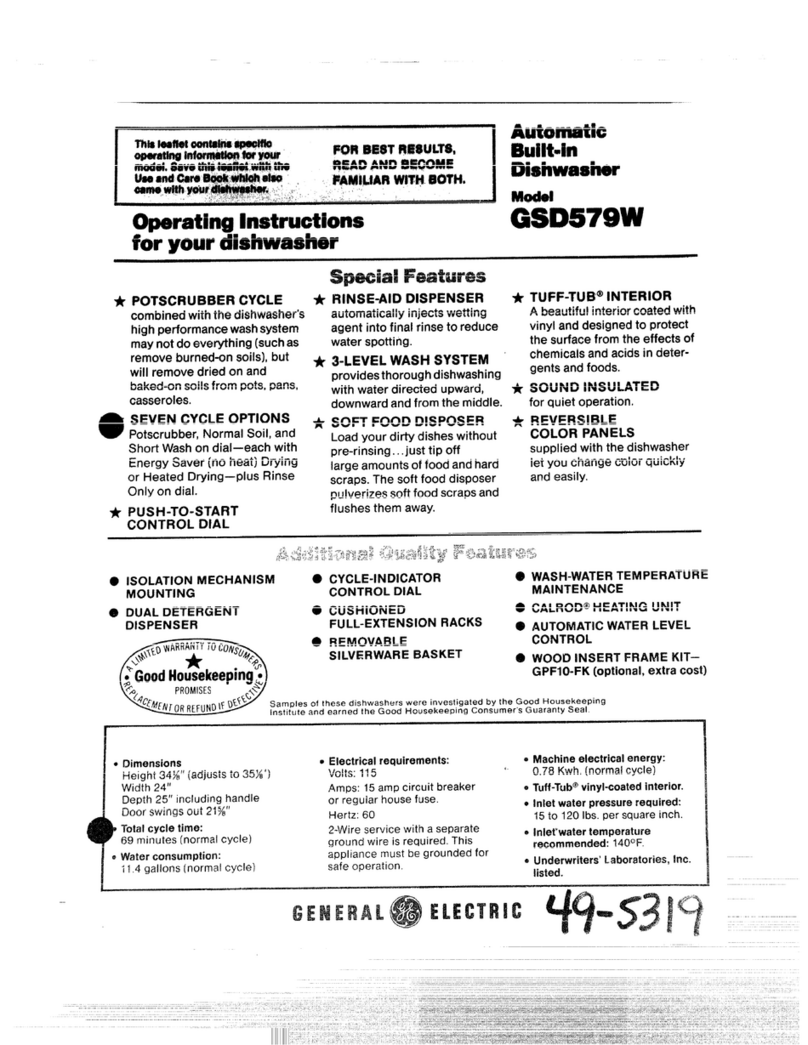
GE
GE GSDS79W operating instructions
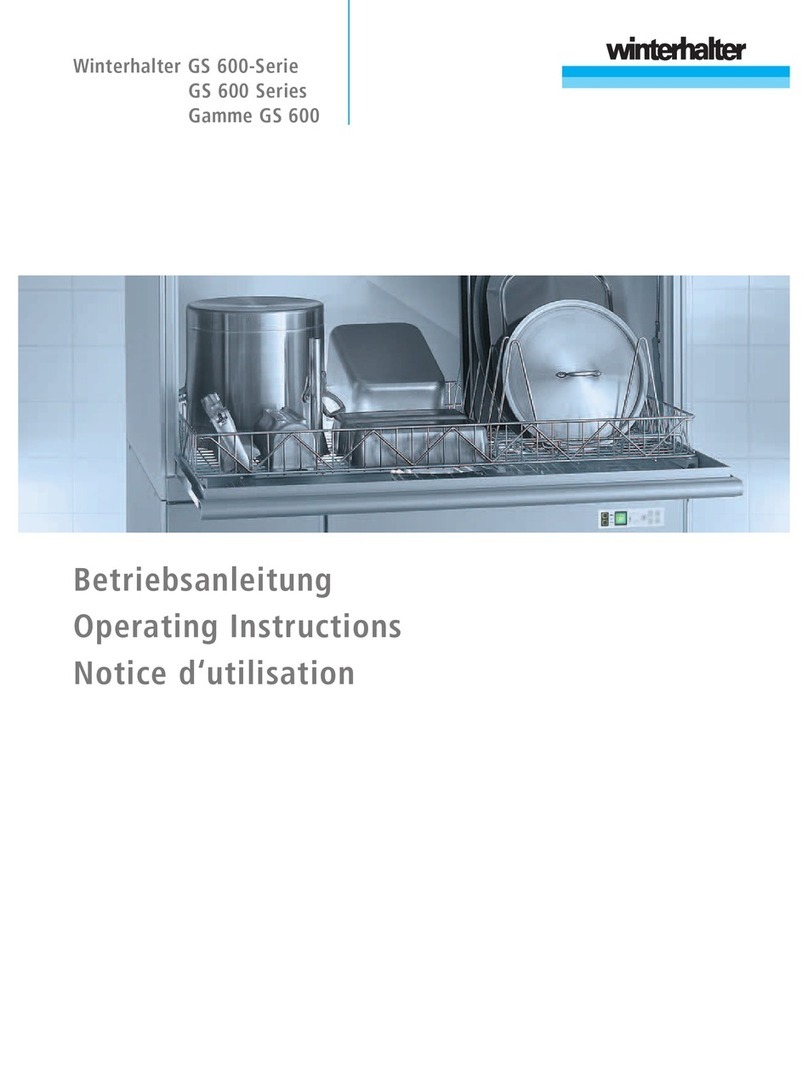
Winterhalter
Winterhalter GS 600 Series operating instructions
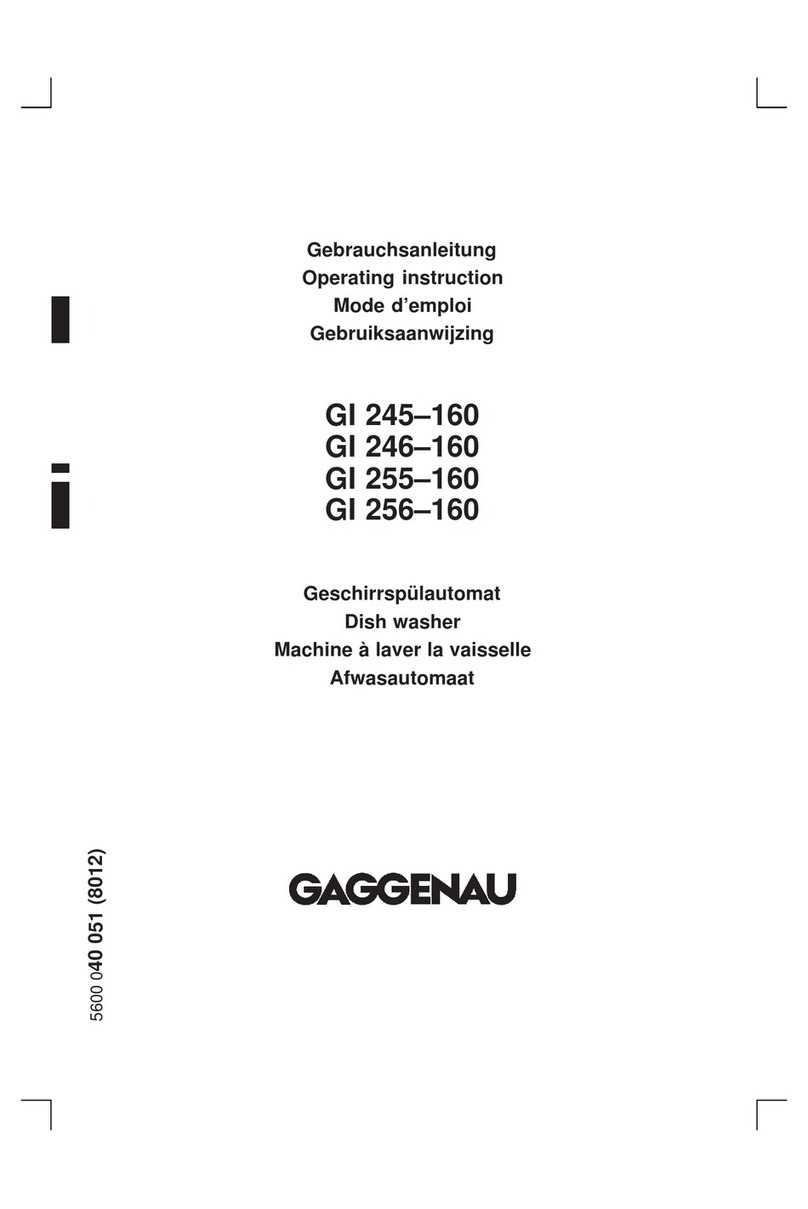
Gaggenau
Gaggenau GI 245-160 Operating instruction

Maidaid Halcyon
Maidaid Halcyon AMH40 User's installation guide
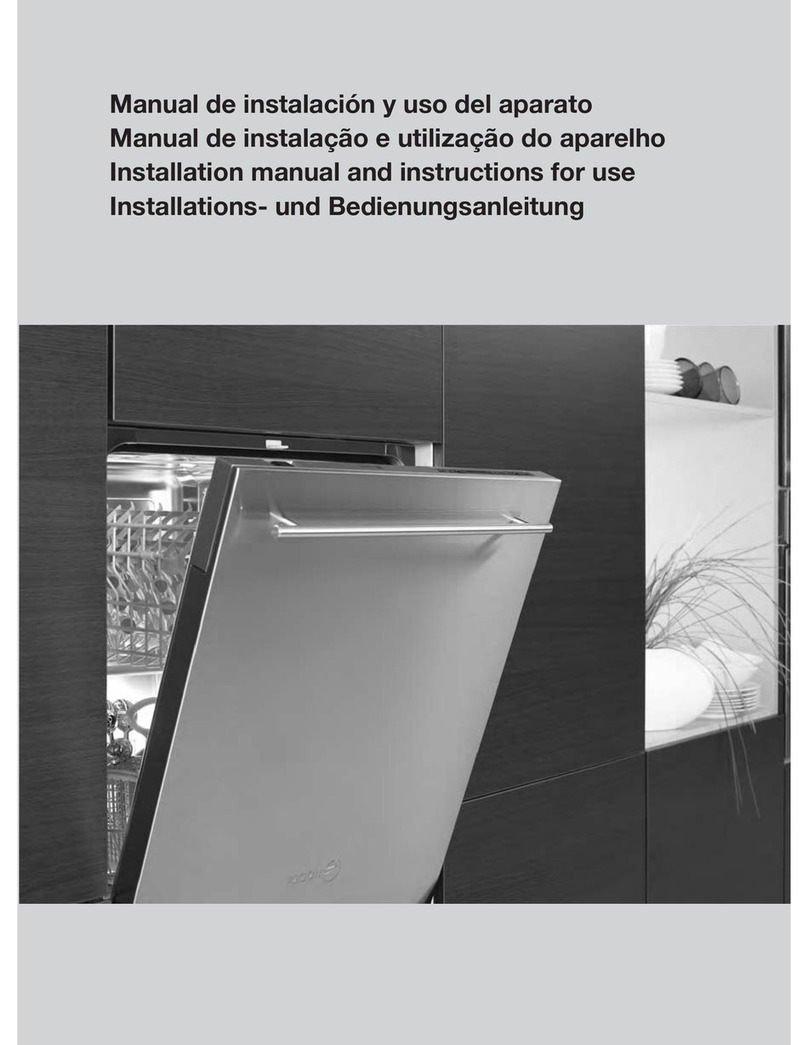
Fagor
Fagor LF73DWITU Installation manual and instructions for use
